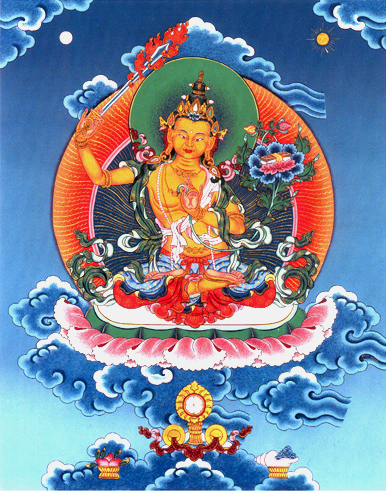| |

Studies
in Buddhadharma
On Ultimate Logic
formalizing the conceptualization of ultimate truth
by Wim van den Dungen
 Contents
Contents  SiteMap
SiteMap

|
This book is about emptiness, the core of the
Buddhayâna, the ‘vehicle’ of the Buddha. Shûnyatâ is the noun form
of the adjective 'shûnya', meaning ‘void, zero, nothing and empty’,
from the root 'shi', or ‘hollow’. But emptiness does not mean
‘nothing’, and instead refers to the absence of something, to the
fact an object has been negated, is deemed not to be present and
nowhere to be found. The zero is not mathematical, as if emptiness
would be nothingness, but stands for a second order, pointing to
what is not there amongst what is given. What is found wanting ? A
certain common way of existence entertained by most of us ... The
text covers the philosophy, logic and experience of emptiness. |
 |
"If there were no such
things as dichotomies that exclude a third category, there would be no way
to make a refutation with analysis that limits the possibilities to two,
(asking) whether it is asserted that something exists or does not exist,
or is one or many, and so forth. If there are (dichotomies that exclude a
third category), then when something is refuted as being one side of a
dichotomy and it is not established as the other, it does not exist. (...)
if something is eliminated as being one side of a dichotomy, it must be
established as the other and that if one is refuted, the other is
established."
Tsongkhapa : Extensive Explanation of "Supplement to 'Treatise of the
Middle Way'", chapter 6, definite enumeration as only two truths.
"In the seen there is only the seen ; in
the heard, there is only the heard ; in the sensed, there is only the
sensed ; in the mentally perceived, there is only the mentally perceived."
Ksudrakâgama (Khuddaka-nikâya), I.10
|
|

homage to Mañjuśrî, Buddha of
Wisdom
appearing as an Eighth Ground Bodhisattva (Weber, 1983) |
|
|
In Buddhist philosophy, ultimate
logic is the formal exposition of the arguments of ultimate
analysis. Instead of conventional analysis, differentiating between
conventional realities like sense objects & mental objects,
ultimate analysis poses the fundamental question of both
epistemology & ontology, namely : What is exactly & truly there ?
In other words, what is the precise status of objects and how true
is this status ? The first question answers what kind of objects
we are dealing with and the second tells us what kind of
validity they possess. Being able to answer both questions for
all possible objects of experience is the first step in acquiring a
conceptual understanding of the
wisdom realizing the true nature of
all phenomena. And to fully enter this wisdom, contrived (by way of
concepts) and uncontrived (by way of direct, i.e. nonconceptual,
nondual seeing), is the core of
Buddha
Śâkyamuni's teaching.
To make a clear cut, I've kept the technical elaborations
at the minimum. No doubt this exposition will be expanded in the
future. The present ultimate logic is not a formal logic of the
ultimate, but a tentative formalization of its conceptual
approximation. It ends with identifying proximate
emptiness
on the basis of a generic idea of emptiness, i.e. a very subtle
conceptualization of the ultimate nature of all phenomena.
To continue to read :
Emptiness Panacea (2017) |
|
|




